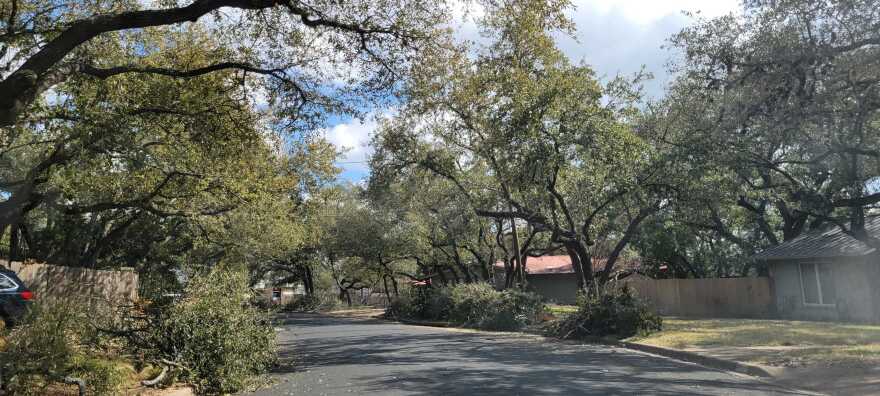The ice storm did not affect all of Austin equally. While damaged trees and power outages occurred across town, they seemed to concentrate in certain parts of the city, especially on the West Side.
There are many reasons for this. Ice may have accumulated more in certain places thanks to the weather or local geography. Power lines in some areas may have been more recently cleared or cleared to a higher standard.
But the kinds of trees that predominate in certain neighborhoods also played a role, as some tree species suffered more ice damage than others.
Live oaks and Ashe junipers appear to have been especially hard hit. The reason? These are trees with a lot of limbs that keep their leaves through the winter, providing more surface area for ice to accumulate.
“Just a little bit of additional ice, an additional 10th of an inch or so, will put hundreds and hundreds of pounds of additional stress on a tree,” says Keith White, a meteorologist with the National Weather Service. "Especially a lot of our oaks, like we have in this area.”
The structure of a tree also makes a difference. Trees without a strong central trunk or with “co-dominant stems” were more likely to break, Texas A&M Forest Service Forester Camille Wiseman told KUT in an email.
“Of the live oaks, the trees that had rigorous growth on the ends of their branches, rather than trees with well-distributed branches were more prone to failure,” she wrote.
Karl Flocke, also with the Forest Service, says the location of a tree also mattered.
“Trees that are in a more open environment like a field, neighborhood, or recently cleared forest were hit the hardest since they are exposed on all sides, and can’t rely on neighbors for support,” he wrote KUT in an email.
Regardless of the types of trees in your part of town, officials are urging people to watch out for falling branches in the coming days. Heavy winds are expected to dislodge more limbs broken by the storm.













